Dumbbells and a horizontal bar are the minimum you need to have for productive training at home. 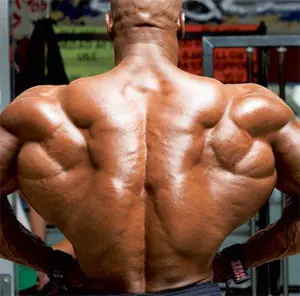
Of course, without any weights or a bar at all, your back can be strengthened and made more flexible; You can cure stooping, scoliosis and even lose weight in this area, but you can never achieve a voluminous muscle pattern and a V-shaped silhouette.
How to pump up your back at home, while receiving returns comparable to those of training in the gym? This can be achieved only by thinking through the training plan down to the smallest detail, taking into account the nuances of the structure and functioning of the target muscles.
In the context of this article, we are interested only in the most superficial muscles that determine the relief of the back. These are the trapezius, lats and core extensor muscles.
The trapezius extends from the base of the skull to the shoulders and shoulder blades. Their purpose is to raise and lower the scapula, as well as bring it closer to the spinal column. Among the range of all exercises where such movements take place, only shrugs provide an isolated load on the trapezius. In this case, the hands simply play the role of ropes with which the dumbbell is attached to the shoulder.
The lats are the most important part of the “rear” for a man, because these muscles give the main outline of the figure. The task of the lats is to bring the shoulder towards the body and pull the limb back (and with a fixed limb, accordingly, to pull the torso). To put it in very simple terms, do deadlifts. So all variations of the exercise of the same name will contribute to the development of the lats.
The extensors (or long lumbar muscles) counteract the abdominal muscles and together with them allow our body to stay upright. The long muscles are trained when we force the spine to extend under load. Hyperextensions, rows in a straight position and in an inclined position - just from this opera.
Since the area from the shoulders to the tailbone is a fairly large part of the body, to grow muscles in this area, you will have to do a lot of work too. As one option, you can devote 2 out of 3 workouts a week to it. For example: Monday we have back and shoulders; Wednesday - chest and legs; and Friday - back and arms.
In this case, the first workout may look like this: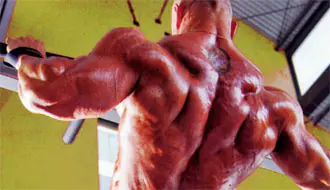
- Press crunches.
- Deadlift with dumbbells.
- Shrugs.
- Standing dumbbell press (alternate if desired).
- Swing dumbbells to the sides.
- Hyperextension (we’ll talk about how to do the exercise at home a little later).
And the third is like this:
- Twisting (optional).
- Pull-ups to the back of the head on the horizontal bar with a wide grip.
- Bent-over dumbbell rows to the stomach.
- Pull-ups on the horizontal bar with a narrow grip (parallel).
- Pushups.
- Lifting dumbbells for biceps.
- Pullover lying down with a dumbbell.
It will be enough to perform basic exercises 8-10 times; the rest - 10-15, in 3 approaches. Now let's take a closer look at each exercise that is important in the context of our main question - how to pump up your back at home.
At first glance, the dumbbell deadlift seems like a simple exercise that involves: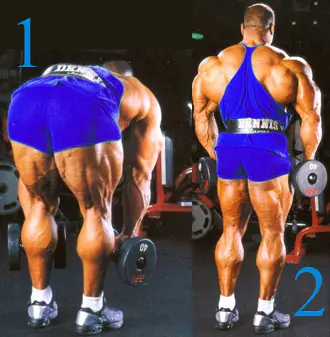
- a) place dumbbells in front of you;
- b) sit down and grab them;
- c) straighten up.
But productivity, as always, depends on the details. Do not bend your legs too much, thereby turning deadlifts into squats. 90 to 45 degrees between hip line and floor. But the legs should not be allowed to be completely straight, in order to avoid overloading the hamstrings - therefore, in fact, the angle is: 85 - 45 degrees. The spine should not lose its arch in the lower back. If you can’t hunch over at all, then you need to either reduce the weight, or squat harder, or bend over less. Be sure to straighten all the way. The deadlift with dumbbells is a basic exercise, and for this reason it is placed at the beginning of the workout.
From the outside, shrugs look like weighted shoulder lifts with relatively relaxed arms. For greater amplitude and stronger contraction of the trapezius, it is recommended to lower the chin, and not only raise the shoulders, but also pull them back a little, pausing for a moment at the extreme point. To avoid being distracted by the grip at all, you can use straps. Unlike long muscles, which do not greatly affect the contours of the body, you cannot build an athletic figure without pumped up trapezius.
How to do a dumbbell press? Simply lift them from shoulder level in a straight line until your arms are fully extended. Lower along the same path. Here the trapezoids work insofar as the exercise is aimed more at the development of deltas. But it must be done in the context of our topic, since few people will be able to imagine a massive male figure apart from the shoulders.
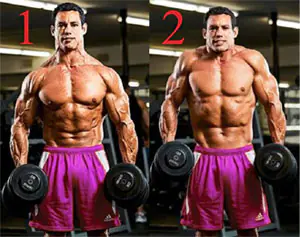
Hyperextension. You can do them at home by hanging from a chair or bed and asking someone at home to fix your legs (or by catching them on heavy furniture). As we have already said, despite the fact that the extensor muscles are not the main pride of a bodybuilder, it is still necessary to train them. An athlete’s lower back, like a loader’s, is the most vulnerable place. The progress of weights when performing all basic exercises while standing depends on the strength in this department.
Pull-ups. In fact, it is the oldest exercise that provided our ancestors with a powerful V-shaped silhouette before those ancestors even climbed out of the tree. In any pull-up, the trapezius (which in this case is unimportant) and biceps (which is critical) are involved to one degree or another. The narrower the grip, the more the biceps “steals” the load from the lats. But with a narrow positioning of the arms, a greater amplitude is possible, which means more work of the muscle fibers. You can solve the dilemma by placing your hands in an average position and trying to exclude the biceps from the exercise as much as possible. And also a combination of all types of pull-ups in one lesson, which is what we initially proposed in the higher training plan. By the way, those who train at home deprive themselves of the opportunity to practice the correct pull-up technique (using the lats, not the arms) on a vertical block with light weights.
Bent-over dumbbell rows. Take a stable position with dumbbells in your hands, tilting your body parallel (or almost parallel) to the floor and slightly bending your legs. Pull the dumbbells to your waist, squeezing your shoulder blades together as much as possible (elbows pointing upward). If you keep your head raised and your hands rotated during the execution (at the top - palms inward, at the bottom - palms back), the lats will contract more strongly at the top and stretch more strongly at the bottom.
For variety, you can replace this movement with a one-arm dumbbell row in a bent position with support on home furniture - you need to lean on a stool or bench with your free hand and knee. In this case, the load will shift from the lower back to the lats.
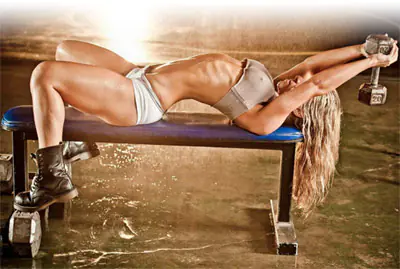
The pullover is a unique exercise that targets two opposing muscle groups: the chest and lats. Despite the fact that the exercise does not allow you to really pump up any of them, you need to do it for general stretching of the shoulder girdle.
Hold a dumbbell with both hands above your chest, at the bottom of the upper plate. Without bending your arms, lower the dumbbell in an arc behind your head. Return it to its original position along the same path. Elbows should be lowered as low as possible.
You can stretch your back not only at the end of a workout, but also between approaches. This will spur recovery, increase the sensitivity of the receptors and simply get rid of the sudden jumps in heart rate that are inevitable if you just sit back and take breaks. It is also a good idea to hang on the horizontal bar for a while as a stretch.



